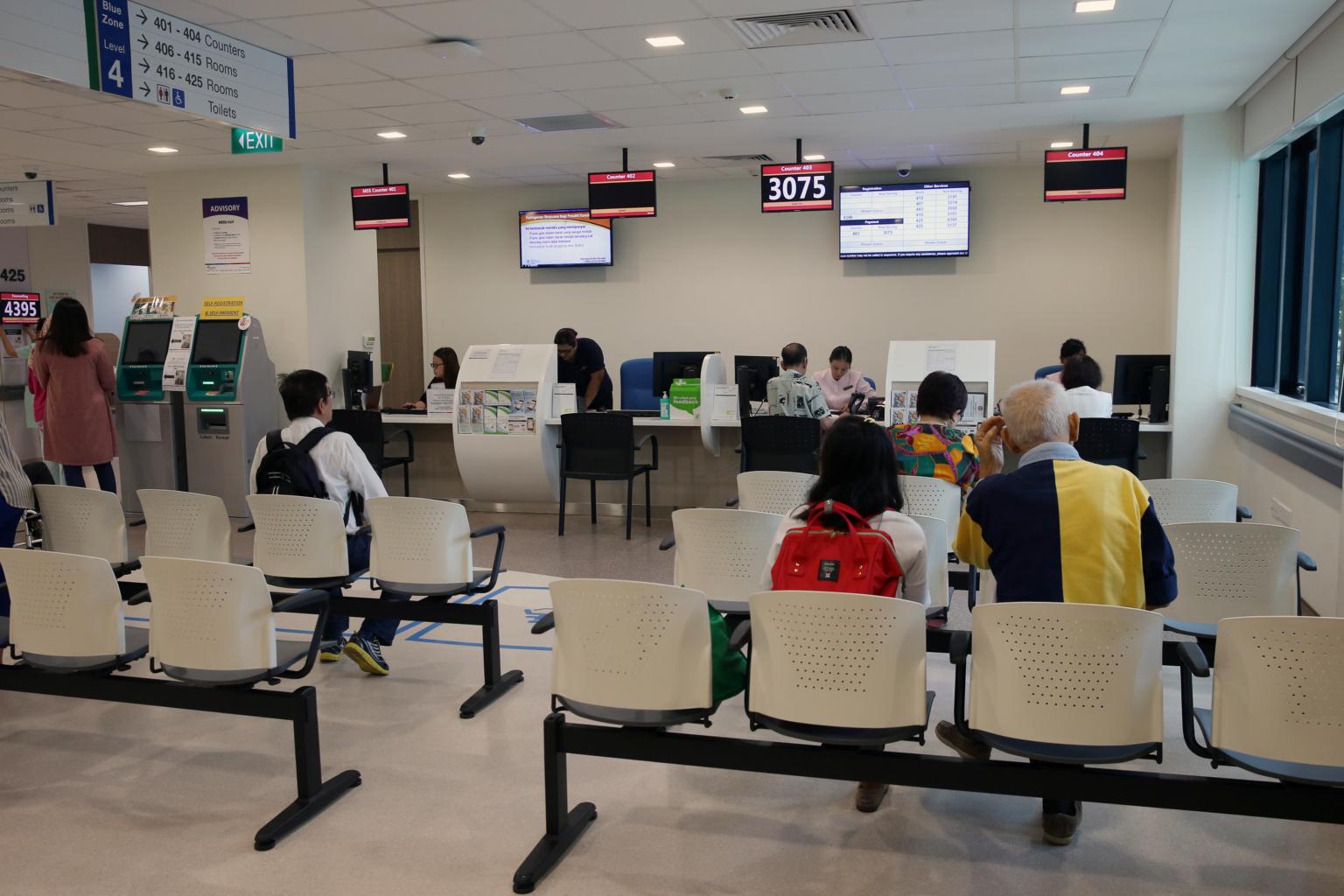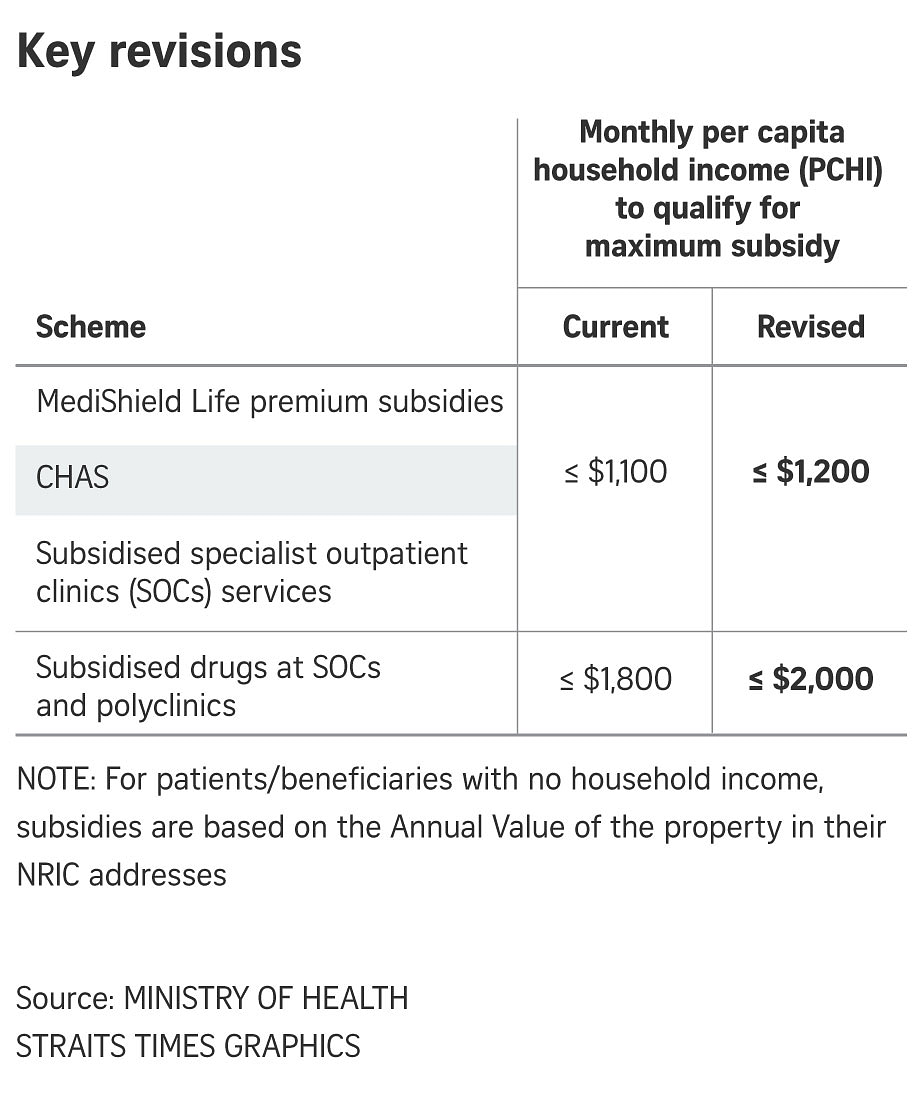More than 365,000 people will benefit from revised healthcare subsidies like Chas by October
Sign up now: Get ST's newsletters delivered to your inbox

Premium subsidies will also be available for a new group of people: Those with a per capita family income ranging from above $2,600 to $2,800.
PHOTO: ST FILE
Follow topic:
SINGAPORE - At least 365,000 Singapore residents will qualify for more healthcare subsidies by October this year.
The Health Ministry will raise the per capita household income threshold for subsidies on a dozen healthcare services, ranging from dialysis and MediShield Life premiums to grants for employing foreign maids.
The change will not affect people from households with no income. For them, the subsidy eligibility remains the annual value of their homes.
The increase in per capita household income to qualify for the various subsidy tiers ranges from $100 to $300, and comes after the latest review of the eligibility of various schemes "to ensure care remains affordable to Singaporeans", said Health Minister Gan Kim Yong on Saturday (July 27).
For example, the Government now pays up to 45 per cent of the MediShield Life premiums for Singaporeans from households with a per capita income of $1,200, which means a total income of $4,800 for a family of four.
By October, the subsidy they enjoy for this compulsory national health insurance scheme will go up to as high as 50 per cent of their premiums.
Premium subsidies will also be available for a new group of people: those with a per capita family income ranging from above $2,600 to $2,800.

This translates to a total income cap of $11,200 for a family of four.
By October, they will be eligible for subsidies of between 15 and 40 per cent, depending on their house type and age of the person.
Another group of beneficiaries set to grow are seniors aged 60 years and older.
When the per capita household income ceiling for the Seniors' Mobility and Enabling Fund is raised from $1,800 to $2,000, more of them will enjoy 90 per cent subsidy for assistive devices such as wheelchairs, pressure relief mattresses, hearing aids and spectacles.
They will also be able to get 80 per cent subsidy for consumable items such as adult diapers and milk feeds.
With Singapore's high rate of diabetes and kidney failure, subsidies for a number of patients with these conditions will also rise by October, depending on their household income. More than 7,000 people are on dialysis, which they must routinely undergo for the rest of their lives.
People who qualify will automatically enjoy the higher subsidies and they do not need to take any action, Mr Gan said when announcing the new income criteria at a carnival to raise awareness of Chas, held at Toa Payoh HDB mall.
Another significant move is the introduction of a new tier to the Chas scheme which allows people to get a government subsidy when seeing specified private general practitioners or dentists.
This is the Green tier for Singaporeans with chronic ailments, a change Prime Minister Lee Hsien Loong had announced at his National Day Rally last year.
To be launched in November, it has no income criteria, unlike the existing Blue and Orange tier which are means-tested.
The new tier "is a major shift towards universal subsidies for chronic conditions under GP care", said Mr Gan, who noted that as the population ages, more Singaporeans will need aid to manage their chronic ailments.
He added that from September, applying for Chas will be simpler.

Singaporeans can fill out and submit their applications online.
Previously, all family members had to sign the form, and this was recently simplified so that only one member needed to do so on behalf of the family.
The per capita household income to qualify for the existing Chas subsidies will also go up by October, Mr Gan announced.
The ceiling for the Blue tier will be raised from $1,100 to $1,200, and for the Orange tier, from $1,800 to $2,000.
From November, higher annual subsidy limits for Chas will also take effect.
In the same month, about 500,000 people in the Merdeka Generation (MG) - Singaporeans born in the 1950s - will start getting subsidies at specified private GP and dental clinics. Their subsidies will be higher than those for Chas card holders.
Mr Gan said the Chas enhancements and the new Merdeka Generation package will cost $200 million a year, or a third more than the $152 million disbursed last year under Chas.

Underlining the importance of family doctors and dentists in Singapore's healthcare system, Mr Gan said: "Our regular family doctors and dentists are our first line of care when we fall ill, and provide continued care to help us manage our health conditions well.
"Through advice, health checks and screening, and vaccinations, they also help us stay healthy."

